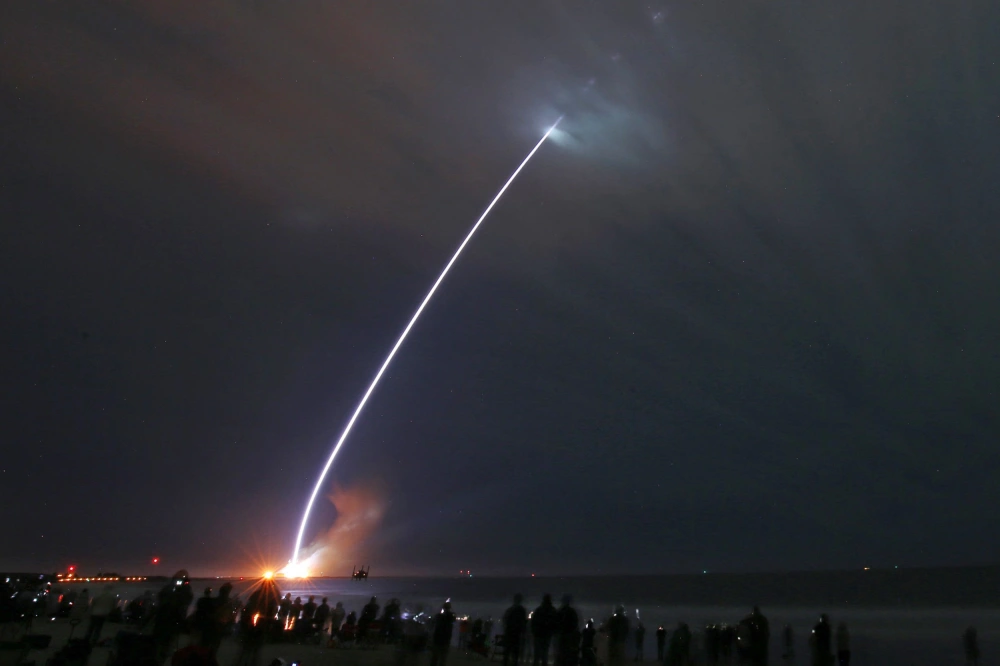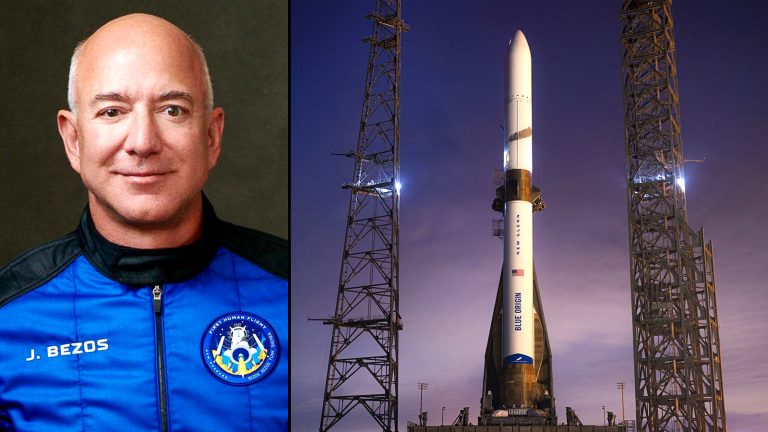CAPE CANAVERAL, Fla. — Blue Origin successfully launched its new, towering rocket for the first time on Thursday, sending a prototype satellite into orbit thousands of miles above Earth.
Named after John Glenn, the first American to orbit Earth, the New Glenn rocket lifted off from Florida’s launch pad—historically used for NASA’s Mariner and Pioneer spacecraft missions over 50 years ago.
The 320-foot (98-meter) rocket, years in development with significant investment from Amazon founder Jeff Bezos, carried an experimental platform designed to host and deploy satellites into their designated orbits.
All seven engines roared to life at liftoff, propelling the rocket through the early morning sky and delighting spectators along nearby beaches. Bezos watched the launch from Mission Control, while Blue Origin employees erupted in celebration as the rocket successfully reached orbit 13 minutes later. The achievement was met with praise from SpaceX CEO Elon Musk.
While the first-stage booster missed its landing on an Atlantic barge, the company emphasized that the primary objective—achieving orbit—was accomplished. Bezos had previously acknowledged that landing the booster on the first try was a “little crazy.”
“We did it!” Blue Origin CEO Dave Limp posted on X after the flight. “On to spring and trying again on the landing.”

For this test flight, the satellite remained inside the second stage as it orbited Earth. The second stage was later planned to be placed in a safe orbit to reduce space debris, following NASA’s guidelines for minimizing junk in space.
Originally scheduled for Monday, the launch was delayed due to ice buildup in critical plumbing. The New Glenn rocket is designed to carry both spacecraft and, eventually, astronauts into orbit and on missions to the Moon.
Founded 25 years ago by Jeff Bezos, Blue Origin has been sending paying passengers to the edge of space since 2021, including Bezos himself. These brief suborbital flights, launched from Texas, use smaller rockets named after Alan Shepard, the first American in space. In contrast, the New Glenn rocket, which honors John Glenn, stands five times taller.
Blue Origin has invested over $1 billion into the New Glenn program, rebuilding the historic Complex 36 at Cape Canaveral Space Force Station. The launch pad is located 9 miles (14 kilometers) from the company’s control centers and rocket factory, just outside NASA’s Kennedy Space Center.
The company plans to conduct six to eight New Glenn flights this year, with the next launch scheduled for spring.
In a weekend interview, Jeff Bezos declined to reveal his personal investment in Blue Origin’s space program. He emphasized that he doesn’t view Blue Origin as a competitor to SpaceX, Elon Musk’s long-dominant rocket-launching company. “There’s room for lots of winners,” Bezos said, adding that this marks the “very, very beginning of this new phase of the space age,” where industry players will collaborate to reduce the cost of access to space.
New Glenn is part of a growing roster of new rockets launched in recent years, alongside United Launch Alliance’s Vulcan, Europe’s upgraded Ariane 6, and NASA’s Space Launch System (SLS), the successor to the Saturn V for manned moon missions.
The largest rocket of all is SpaceX’s Starship, standing at approximately 400 feet (123 meters). Musk has stated that the seventh test flight of Starship could take place later on Thursday from Texas. He hopes to replicate the success of October’s flight, where he caught the returning booster with giant mechanical arms at the launch pad.
Starship is slated to be NASA’s vehicle for landing astronauts on the Moon under the Artemis program, which will see crews return to the lunar surface for the first time since the Apollo missions. The first two lunar landings will involve crews descending from lunar orbit in Starships.
Blue Origin’s own lunar lander, Blue Moon, is expected to debut on the third lunar landing by astronauts.
NASA Administrator Bill Nelson, who championed the idea of competing moon landers—similar to the strategy of contracting two companies to transport astronauts to the International Space Station—will step down when President-elect Donald Trump takes office on Monday. Trump has selected tech billionaire Jared Isaacman, who has completed two privately financed SpaceX flights, to lead NASA. Isaacman’s appointment must still be confirmed by the Senate.
Originally, New Glenn’s debut mission was to launch twin spacecraft to Mars for NASA, but the agency withdrew them from the October flight when it became clear the rocket wouldn’t be ready in time. The two small spacecraft, named Escapade, are now slated to launch aboard a New Glenn rocket no earlier than spring. They will study Mars’ atmosphere and magnetic environment while orbiting the planet.

